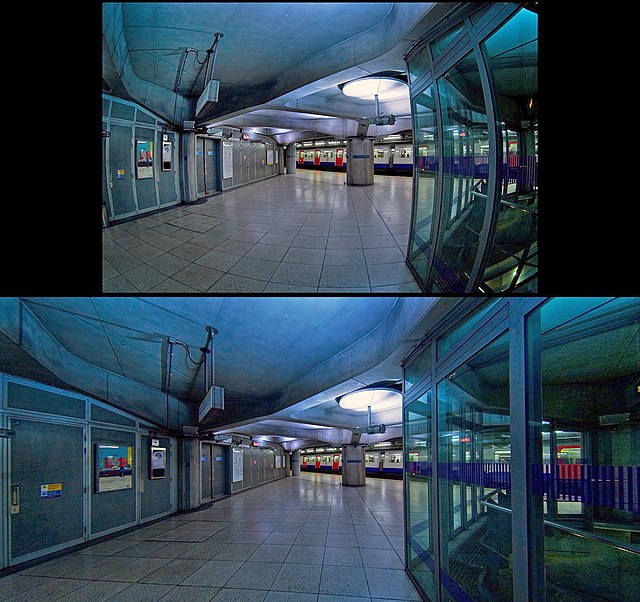Curvilinear perspective, also five-point perspective, is a graphical projection used to draw 3D objects on 2D surfaces. It was formally codified in 1968 by the artists and art historians André Barre and Albert Flocon in the book La Perspective curviligne, which was translated into English in 1987 as Curvilinear Perspective: From Visual Space to the Constructed Image and published by the University of California Press.
Curvilinearity in photography: Curvilinear (above) and rectilinear (below) image. Notice the barrel distortion typical for fisheye lenses in the curvilinear image. While this example has been rectilinear-corrected by software, high quality wide-angle lenses are built with optical rectilinear correction.
Jean Fouquet, Arrival of Emperor Charles IV at the Basilica St Denis
Parmigianino, Self-portrait in a Convex Mirror
Detail of convex mirror in Jan van Eyck's Arnolfini Portrait, 1434
A 3D projection is a design technique used to display a three-dimensional (3D) object on a two-dimensional (2D) surface. These projections rely on visual perspective and aspect analysis to project a complex object for viewing capability on a simpler plane.
Axonometric projection of a scheme displaying the relevant elements of a vertical picture plane perspective. The standing point (P.S.) is located on the ground plane π, and the point of view (P.V.) is right above it. P.P. is its projection on the picture plane α. L.O. and L.T. are the horizon and the ground lines (linea d'orizzonte and linea di terra). The bold lines s and q lie on π, and intercept α at Ts and Tq respectively. The parallel lines through P.V. (in red) intercept L.O. in the vanishing points





